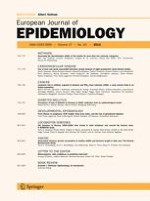01-10-2012 | DIABETES MELLITUS
Prevalence of type 2 diabetes in Germany in 2040: estimates from an epidemiological model
Published in: European Journal of Epidemiology | Issue 10/2012
Login to get accessAbstract
To estimate the number of persons in the age-group 55–74 years with type 2 diabetes in Germany until 2040 and to analyze the impact of an intervention in a high risk group. A Markov model is used to generate forecasts by age and sex in each year using inputs of estimated diabetes prevalence, incidence and mortality based on actual national data. Projections about future demographics stem from the German Federal Office of Statistics. In a slightly modified model a state for persons with prediabetes is included to study the interplay of effect-size and participation quote on the number of persons with diabetes. The projected number of people with type 2 diabetes aged 55–74 years rises from 2.4 million in 2010 to 3.9 million in 2030. From 2030 on this number will decrease slightly to 3.3 million in 2040. If every second person aged 55–74 with prediabetes took part in a prevention program with the effect size of the Finnish Diabetes Prevention Program, 0.4 million cases could be prevented until 2030. To prevent 1.0 million cases in 2030, 90 % of all persons with prediabetes had to take part in an intervention that reduces the transition rate from prediabetes to diabetes by 55 %. Unless enormous efforts are spent into prevention programs, the number of persons with type 2 diabetes will increase tremendously in the next two decades.





